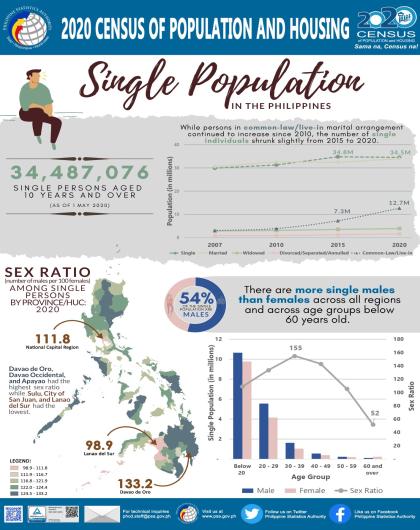One in every five household own other land (2020 Census of Population and Housing)
More than half of the total households had internet access
Of the 26,374,653 households, 56.1 percent or 14,794,590 households reported that they have access to the internet. (Table B and Figure 1)
Among the 17 regions, National Capital Region (NCR) had the highest proportion of its households with internet access, at 74.6 percent. Aside from NCR, three other regions had internet access higher than the national rate, namely: Region IV-A – CALABARZON with 70.2 percent, Cordillera Administrative Region (CAR) with 62.8 percent, and Region III – Central Luzon with 62.3 percent. (Figure 1)
Region IX – Zamboanga Peninsula had the lowest proportion of households with internet access at 28.5 percent. (Figure 1)
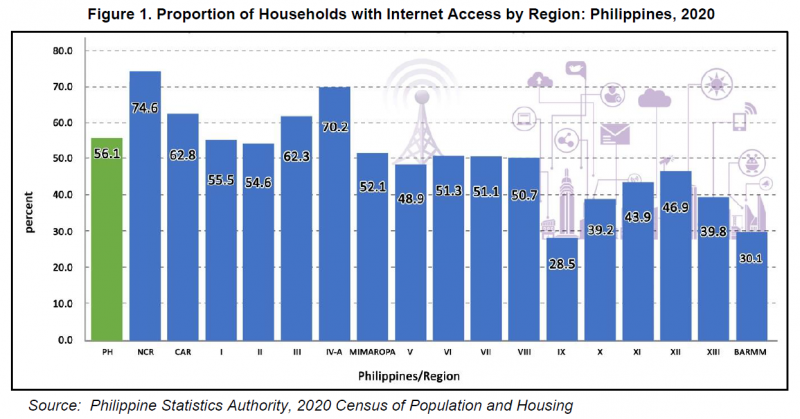
CALABARZON had the most number of households in the country that have access to internet
In terms of share to the total number of households in the country, Region IV-A posted the highest number of households having internet access with 19.3 percent share. This was followed by the NCR with 17.6 percent share, while Region III came in third, with 12.8 percent. Bangsamoro Autonomous Region in Muslim Mindanao (BARMM), on the other hand, posted the lowest number of households with internet access at 1.7 percent. (Table 1)
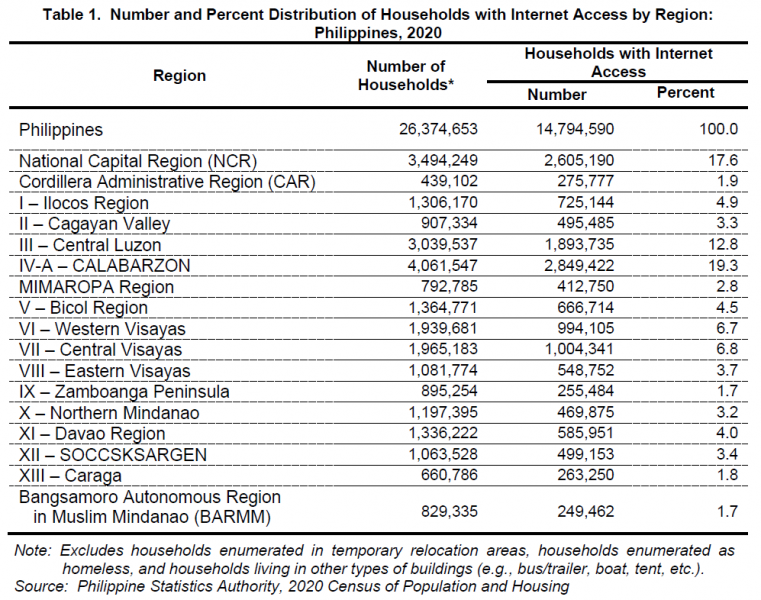
Two in every five households reported mobile broadband network as main type of internet connection
It was reported that 42.1 percent of the households have internet connection through a mobile broadband network. This is an internet connection via a handset, a card (integrated Subscriber Identity Module or SIM card) or a USB modem. (Figure 2)
On the other hand, 15.0 percent of the households reported having internet connection through fixed (wired) narrowband/broadband network. Internet connection through fixed (wireless) broadband network were reported by 4.0 percent of the households while 2.4 percent through satellite broadband network. (Figure 2)
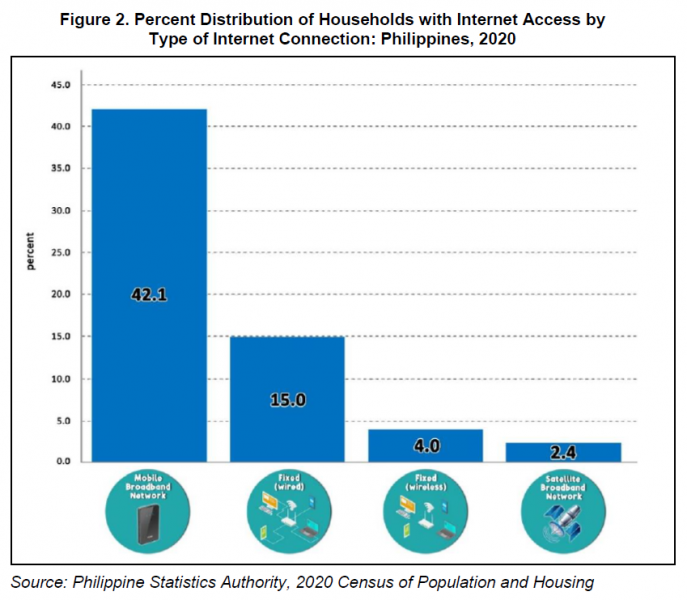
Mobile broadband was the most common type of internet connection in Region IV-A
Across all households in the country that reported mobile broadband network as their main type of internet connection, Region IV-A had the highest number of households with 17.9 percent out of the total 11.1 million households. This was followed by NCR with 16.0 percent and Region III with 11.8 percent. (Table 2)
For fixed (wired) broadband network, NCR had the highest share with 26.4 percent of the total 3.97 million households. This was followed by Region IV-A with 23.4 percent and Region III with 14.1 percent. (Table 2)
The same regions top those reporting fixed (wireless) broadband network and satellite broadband network as their main type of internet connection. (Table 2)
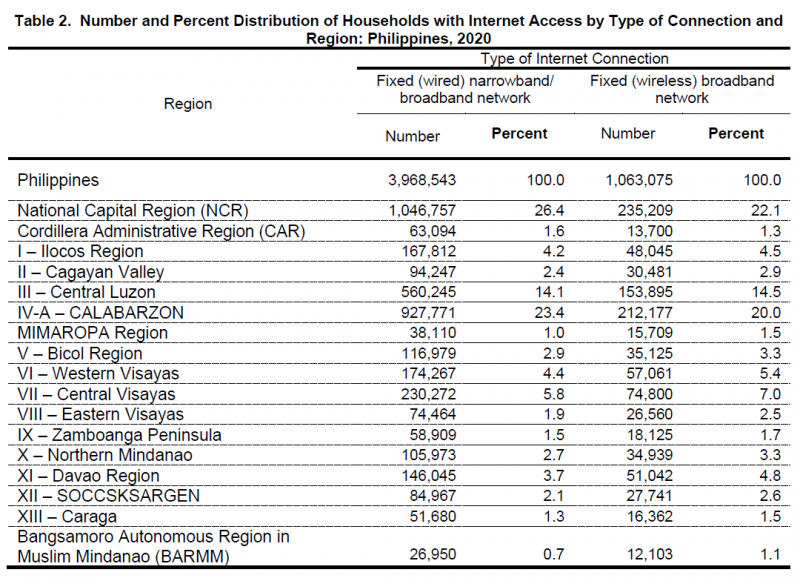
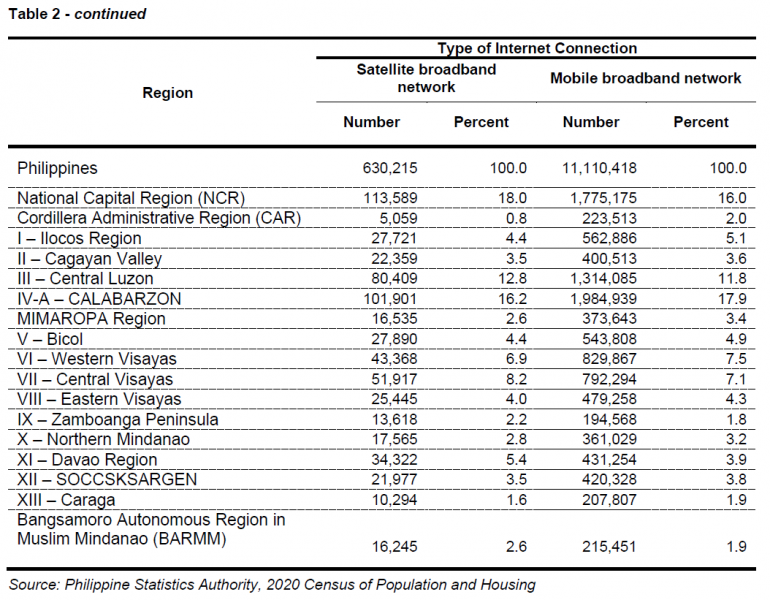
More than half of the households used internet at home
Home was where most Filipino households connect to the internet, with 56.3 percent of the households in 2020. This was followed by those utilizing internet when in mobility, via mobile cellular telephone or other handheld devices that are connected to a mobile phone network, with 23.1 percent; 19.7 percent used the internet in their workplace; and 14.1 percent of the households in their school. (Figure 3)
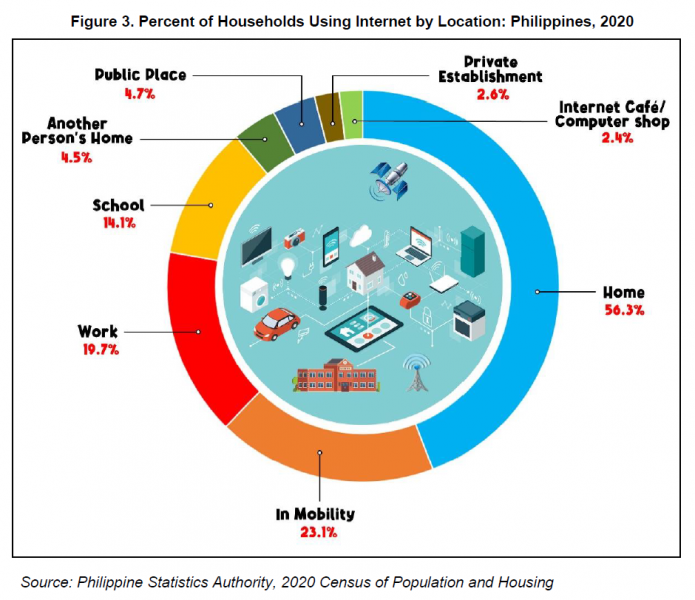
More than eight in every ten households had a mobile phone
Mobile phone was the most commonly found household convenience/ICT device/vehicle in households. More than eight out of ten households (81.7%) had mobile phones. Electric fan and other cooling equipment with 77.9 percent; and television with 75.7 percent followed. Completing the top 5 household convenience/ICT device/vehicle in households are refrigerator/freezer with 46.2 percent; and washing machine with 42.9 percent. (Table 3)
On the other hand, nonmotorized boat/banca was least present in households with a report of only 2.0 percent. (Table 3)
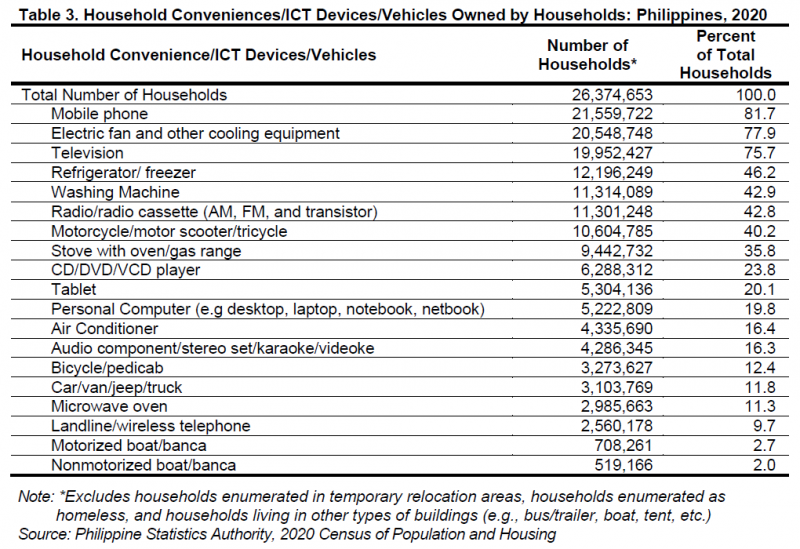
The statistics presented in this report were based on the information provided by the respondent or any responsible household member who may provide accurate answers to the questions and give correct information about the household. Moreover, the households described in this release, which total to 26,374,653 households, exclude those enumerated in relocation areas, those enumerated as homeless, and those living in other types of buildings (e.g., bus/trailer, boat, tent, etc.).
The following data items were collected by the enumerator from a sample of 20 percent of the total households in the enumeration area/s using CPH Form 3 (Sample Household Questionnaire) or CPH Form 7 (Self-Administered Questionnaire for Sample Household):
- Presence of household conveniences/information and communication technology devices/vehicles (“Does this household have the following household conveniences/information and communication technology devices/vehicles in working condition?”)
- Internet access (“What type/s of internet access is/are available at home?”)
- Internet use (“Where did this household member/s use the internet in the last three (3) months?”)

